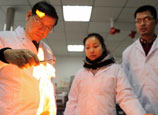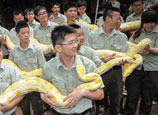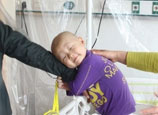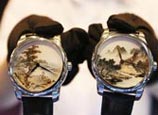
ABOARD XIANGYANGHONG 09, June 24 (Xinhua) -- The Chinese Jiaolong submersible, designed for scientific research, may one day be used to take diving enthusiasts to the depths of the sea, an official said Monday.
The sub may be used for commercial activities while it is not on duty, according to Liu Feng, chief commander of a trial dive mission that began on June 11.
Diving in Jiaolong is quite a luxury that "cannot be free to the public like parks or museums," Liu said, adding that the specific cost of each tour may not be known until the sub goes into regular operation.
Its current mission, with scientists as crew members, is the start of a five-year trial period for the Jiang to conduct biological surveys and geological sampling in the South China Sea before it starts regular operation.
High-definition video images acquired by Jiaolong showing brown mussels some 1,300 meters under water have been applauded by scientists as the "most spectacular scene ever."
"We've never had the chance to obtain deep-sea samples before. It was quite a rare opportunity for me," said Qiu Jianwen, an assistant professor of biology from Hong Kong Baptist University who was aboard Jiaolong.
Also on Monday, the National Deep Sea Center (NDSC) unveiled the selection criteria for candidates who will become the second batch of oceanauts.
The selection program is only open to Chinese citizens, according to the center.
Male applicants should be aged between 22 and 35, and between 165 cm and 176 cm tall. Females should be aged from 22 to 30, and between 160 cm and 170 cm tall.
Applicants must be free from any history of trauma or familial genetic diseases, while being both physically and mentally healthy.
NDSC director Liu Feng, who is also in charge of the selection, said that 180 candidates will have to pass several tests before six oceanauts, including two females, are selected.
"They will receive theoretical and practical training on diving to prepare for the next year's trial mission," said Liu.
Jiaolong set a new national dive record after reaching 7,062 meters deep in the Pacific Ocean's Mariana Trench in June 2012.
















 Childhood in an isolated sterile room
Childhood in an isolated sterile room


![]()
